
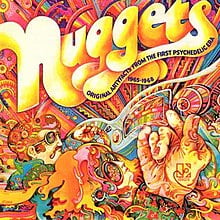
Before he became Patti Smith’s lead guitarist, Lenny Kaye compiled Nuggets: Original Artyfacts from the First Psychedelic Era. Released in 1972, the two-LP set covered American garage rock and psychedelia from the years 1965-1968 and was a major influence on punk rock. Rhino Records reissued an expanded version of the set in 1998, with 118 tracks in total. I’m profiling and rating each of these 118 tracks, working backwards.
Track 87: Optical Sound by The Human Expression
Release Date: 1967
From: Los Angeles, California
Rating: 8/10
OPTICAL SOUND – The Human Expression [2:35]
(Jim Quarles/Jim Foster)
Personnel/JIM QUARLES: vocals * MARTIN ESHLEMAN: lead guitar * JIM FOSTER: guitar * TOM HAMILTON: bass * ARMAND POULIN: drums
Produced by SCOTT SEELEY & DON CLIFTON
Recorded in Los Angeles, CA
Accent single #AC-1226-0 (5/67)
The Human Expression have a mundane story and some spectacular missed opportunities. The members came from Orange County, California, and after rehearsing for six months cut some demos. This led to a recording contract with the small L.A. label Accent Records. They released three singles – they’re most remembered for ‘Love at Psychedelic Velocity’, the b-side of their debut single, and for ‘Optical Sound’.
On the psychedelic ‘Optical Sound’ the restraint of lead guitarist Martin Eshleman is impressive; his phased lead guitar appears unpredictably throughout the song. Even though a lot of the remaining elements, like the lead vocal and the melody, are merely competent, Eshleman’s guitar elevates the song. Like a bunch of other Nuggets bands, The Human Expression have clearly taken some notes from The Byrds’ ‘Eight Miles High’. The sound is a little lo-fi and, along with the arty guitar, it sometimes recalls 1980s alternative bands like The Dream Syndicate or Sonic Youth.
After ‘Optical Sound’, the band’s career faltered. They considered two songs from outside writer Mars Bonfire for their follow-up single. They used ‘Sweet Child of Nothingness’, which became their third single. The song they rejected was ‘Born to be Wild’, which became a US #2 for Steppenwolf. The band’s career ended prematurely after bassist Tom Hamilton accidentally slammed Eshleman’s finger in a door during a break in practice, severing the tendons in his fingers. Eshleman was forced to leave the band. Lead vocalist Jim Quarles left shortly afterwards, feeling that their original chemistry had gone.
In 2003, an original pressing of the “Optical Sound” single sold on eBay for US $2,300. The band have released a 14-track compilation, Love at Psychedelic Velocity, which covers their three singles, demos, and some unreleased material from Jim Quarles.
Read More
14 Comments
Leave a Reply
Read about the discographies of musical acts from the 1960s to the present day. Browse this site's review archives or enjoy these random selections:
I add new blog posts to this website every week. Browse the archives or enjoy these random selections:
Subscribe
Subscribe to receive new posts from Aphoristic Album Reviews.







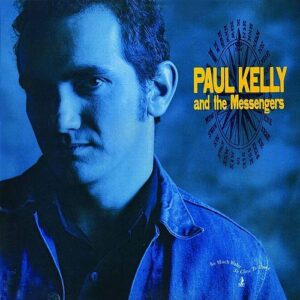

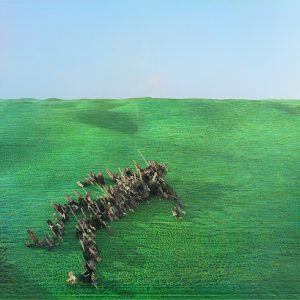
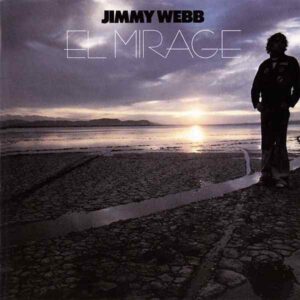

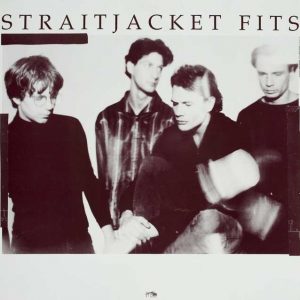
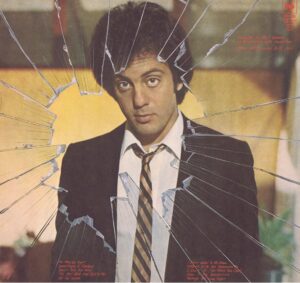

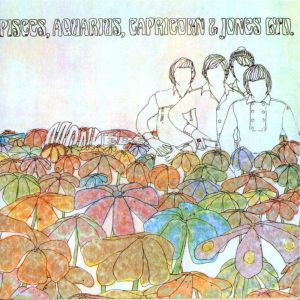
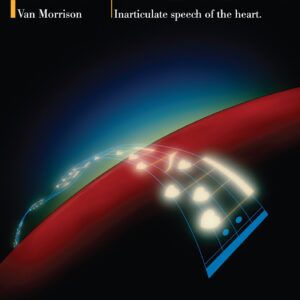
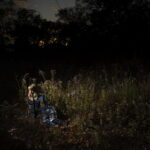



Ouch…I hope he could play again at some point.
I do like it…it is different. I do like the guitar all the way through. Needless to say they made the wrong choice…that would leave you thinking the rest of your life.
Is the guitar phased, or is there a better way to describe it?
Phased is a fine way to put it. He has chorus or some sort of an effect and heavy delay/echo on it.
Another catchy tune. Never heard of it. Nice psychedelia. As to the guitar player, wow that sucks. That is the nightmare of anybody who plays an instrument. I read further that an artery was severed. I tried to find out what happened to him after that but alas, every story has more or less the same info as you do. And he seems to have otherwise disappeared into the ether.
Yeah, these bands are often pretty obscure to start with. I like to see what they’re doing now, but sometimes it’s tricky to find anything.
Yeah, this guy has disappeared from the face of the earth. I may have to hire a private detective to track him down.
That is unbelievable about Born to Be Wild. How could they make such a big mistake?? The Steppenwolf is one of the 50 greatest singles ever. Of course it probably wouldn’t have sounded anything like that one, but still, they probably could have had a hit with it no matter how they did it. Even if it didn’t end up being in Easy Rider. ha ha. As for this song, I think it’s one of those middle Nuggets: not bad but not really great.
I think the vocalist is a little pedestrian – it worked better for Steppenwolf. But it could have been enough to let them record some albums and become better known.
True. The guy probably couldn’t have given the song much personality the way John Kay did in the Steppenwolf one..
My favorite little factoid about Born to Be Wild is that it contains the first known use of the phrase “heavy metal” in music. But it doesn’t seem to be referring to music in any kind of way I’m not sure what exactly it is referring to. A lot of people think it’s talking about motorcycles. But that could just be because it was used in the motorcycle scene in Easy Rider, and so it became associated with motorcycles. I’d like to know what the guy who wrote it says it means.
I think I’d forgotten that after knowing it at one point. I think from the context of the other lyrics it’s about a motorcycle.
This could be the soundtrack to a drug scene in a movie (natch). Listen to that spring reverb!
Yup, a few drug songs recently.
Fits the record perfectly.